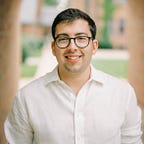Part 8: Reducing the stigma and growing more Healing Forests
Changing the culture around addiction and recovery is within our grasp
Though much of the infrastructure is there, Ann Arbor is far from being the perfect Healing Forest. “Ann Arbor is a very judgmental place,” Engelbert said.
She added, “Even if I’m gonna say the word ‘heroin use,’ I’m gonna lower my voice right? Because you can’t just say that. Somebody can’t just walk down the street and tell anybody they want, ‘Hey I haven’t used heroin in 6 months.’ People would be like, ‘Woah, you’re a freak.’ ”
That may be true anywhere else too. For that reason, how Ann Arbor’s Healing Forest has grown has to be analyzed.
“Maybe it’s more happenstance than deliberate,” Engelbert said.
Making sense of Engelbert’s comment is complicated. Even as recently as four years ago, the answer would likely lean toward happenstance. But as the opioid crisis gained more attention, the answer has slowly shifted in the opposite direction. Efforts to bring the community together and address addiction in Washtenaw County have been gaining steam. In 2013, the Washtenaw Health Initiative Opioid Project was organized to reduce opioid overdoses and deaths.
“What we do is pull together all of the relevant stakeholders in the community, whether that’s emergency department physicians, treatment providers, law enforcement agencies, county government, people in recovery, and other organizations that work on this issue,” said Theresa Dreyer, who facilitated the project until this June.
“Our goal is to align the services that are available in the community, align the policies in the community, so that no matter where a person presents, whether that’s in the emergency department or a treatment facility. If that particular organization can serve their needs, great. If they need to be referred to a different organization, they know who to refer, which organizations provide which services, and how to make that transition seamless.”
These efforts led to a 25 percent reduction in opioid overdoses in 2015 from the previous year. But this only tells part of the story. WHIOP holds meetings each month, but community members who don’t have a direct connection to addiction like small business owners haven’t attended.
That’s where the Washtenaw Recovery Advocacy Project, or WRAP, comes in, a nonprofit that formed last year, whose goal it is to educate the community about recovery.
Debbie Wright, secretary for WRAP, said, “I think one of those ways we’re trying to (reduce stigma) is to really put a face on recovery and let people know in the community that people do recover and that people do move on and people do flourish in recovery and that there’s a lot of people here in recovery. We’re not going anywhere.”
WRAP has been working to educate Washtenaw County through community events. For example, last year there was a recovery advocacy walk in downtown Ann Arbor and another occurred this May.
WRAP is still in its infant stages, though, meaning there is plenty of work left to be done to keep bridging the gap between those involved and not involved with addiction on a daily basis. The recovery community needs allies to reduce the stigma surrounding addiction. With more allies, the progress toward integrating into the community and not being labeled as an “other” can accelerate.
Growing a Healing Forest is a mentality.
The Healing Forest is a book store realizing, without ever directly reaching out to the recovery community, that there should be more alternatives to going to the bar.
“We simply pride ourselves on being a welcoming, safe, friendly atmosphere for all,” Mike Gustafson, owner of Literati Bookstore in Ann Arbor, wrote over e-mail. “Almost all of our events and live readings (we host many live readings throughout the year, upwards of 150) are free and open to all. We are also open later in comparison to other retailers in the area, specifically because we believe people sometimes want an alternative to noisy bars. I’ve worked with a few student groups in the past to spread awareness about our live readings among undergraduates, simply because I feel like in college so many social events involve or are centered around alcohol.”
The Healing Forest is also Nic Sims, who opened Brillig Dry Bar, an alcohol-free bar that serves tasty non-alcoholic beverages. It began as a pop-up venture but will now have regular hours starting in the fall.
Most places aren’t like Ann Arbor, though. There aren’t universities, treatment centers, functioning bus systems, and countless meetings everywhere that are accessible. But remove all that, and the common theme of valuing the individual and their experiences remains. That said, some cities and towns may be more well-positioned than others to instill those values.
What does a Healing Forest look like in a rural town or a poverty-stricken city like Flint that is working through another crisis?
The mechanisms may ultimately look different, but a Healing Forest is possible anywhere if the community decides to attempt to rid itself of the stigma surrounding addiction. That’s where government leadership can come in. Whether it’s through passing a resolution in support of the recovery or anti-discrimination legislation, there’s an opportunity to set the standard, recognize that treating addiction also takes place outside a treatment facility, and make a Healing Forest deliberate rather than happenstance.
A Healing Forest is possible anywhere if the community decides to attempt to rid itself of the stigma surrounding addiction.
The Healing Forest of Ann Arbor has many faces like Wright, Dreyer, Schwartz, Statman, Gratopp, Roberts, Parson, Byberg, Weinzweig, and Engelbert. With time and efforts to change people’s perspectives, there could be more communities supportive of recovery. Values will change, the soil would get even healthier, and maybe more people will be able to heal.
